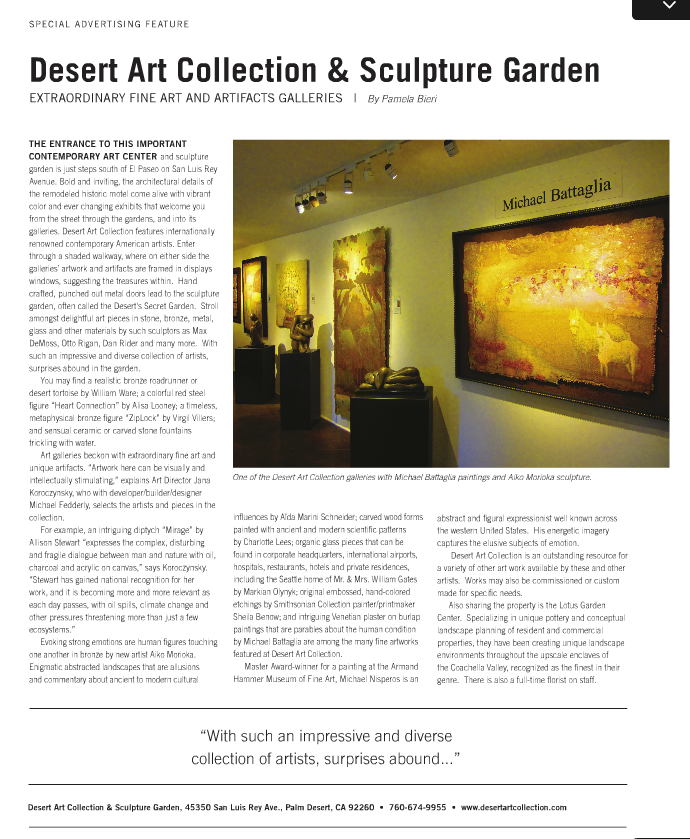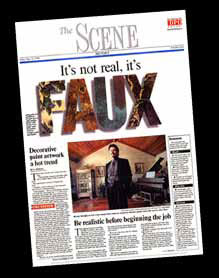In The Press
It’s not real, it’s FAUX
DENVER POST
Decorative paint artwork a hot trend These days you just can’t trust your own eyes. Those bronze cranes in the lobby with the verdigris finish? They’re made of wood. That aged plaster surface? Painted last seek. And those marble columns at the museum? The work of a talented painter. Faux painting - the art of finishing a surface so it looks like something else - is a hot trend in interior decorating. The term covers everything from do-it-yourself, sponge-painted walls to professionally done trompe l/oeil murals in restaurants and public spaces that seem to add a window and a view where there is none.
Denver artist Michael Battaglia has done faux bois (that’s “fake wood”) on the drywall living room walls and ceiling of Barbi Benton’s house in Aspen, and a stencil pattern washed to look as though it has for centuries been on the concrete floor of cable magnate John Malone’s home south of Denver. For Colorado Rockies pitcher Darryl Kile and his wife, Flynn, Battaglia painted dining room walls to look like leather, and he applied broken-color and antique finishes in the Kile’s master bedroom, entryway and living room.
For a ranch in Ouray, he duplicated the look of beetle-kill pine on the doors and woodwork and made some 17,000 square feet of exposed ceiling look like weathered cedar. One of the most elaborate jobs he ever did was for television news personality Deborah Norville. He applied a finish that “looks like abraded silk” to the woodwork in her New York brownstone and gave the walls a shaded ombre effect that’s darker at the top than near the floor. In her dining room, he created large, diamond-shaped panels with a gold-leaf marble look that contain hidden messages approved by Norville and her husband. “The way we do our marble finishes it’s possible to hide words so that you don’t see them unless you know where to look,” Battaglia says, agreeing that it’s sort of like the way theater caricaturist Al Hirschfeld hides the name “Nina” in his drawings. Although most of Battaglia’s work has been residential, he just completed a major commercial project at the new Venetian Hotel in Las Vegas. He’s also collaborated with Wm Ohs, Inc., a Denver cabinetmaker, on a line of Italianate kitchen cabinetry. Their sgrafitto finish is available in five colors and retails for about #35 a square foot.
Battaglia defines “faux” as “imitating a surface and giving the illusion of another surface.” But he’s quick to add that imitation isn’t all he does. “I consider myself first of all an artist and surface designer. It’s not just walls; it’s floors, it’s woodwork, it’s pottery - you name it. Any kind of surface that needs something unusual and different.”
In some cases, “faux” isn’t even the right word, because designers aren’t just duplicating the look of Old World plaster by painting over it but using traditional European fresco and stucco techniques that integrate color into the plaster itself. “You can only fake it so far, “ says designer Andrea Lawrence Wood of Denver.
“It used to be that people wanted to see the materials that created the effect. Now people don’t want to see the tools you used,” Battaglia says.
“Old World” finishes are popular right now, he notes. These are finishes that evoke the warm, sun washed walls of Tuscany or Province.
“There’s a big trend toward a combination of color and texture - either actual texture or visual texture - that mimics the look of stone or old plaster work,” agrees Gary Hall who, like Battaglia, has a fine-art background but has applied his skills to faux painting for the past 10 years in and around Denver.
Faux painting is incredibly labor-intensive and is almost always done on-site, so getting a professional to paint your wall doesn’t come cheap. The rock-bottom price seems to be about $1.50 a square food, which might cover sponge-painting a large wall that doesn’t need any primer or base coat. Typically, however, people pay for a more involved design process, including consultations and sample boards before the actual painting gets under way.
The Denver Post
Saturday, May 22, 1999
By L.C. Burleson
Architecture & Design of The West
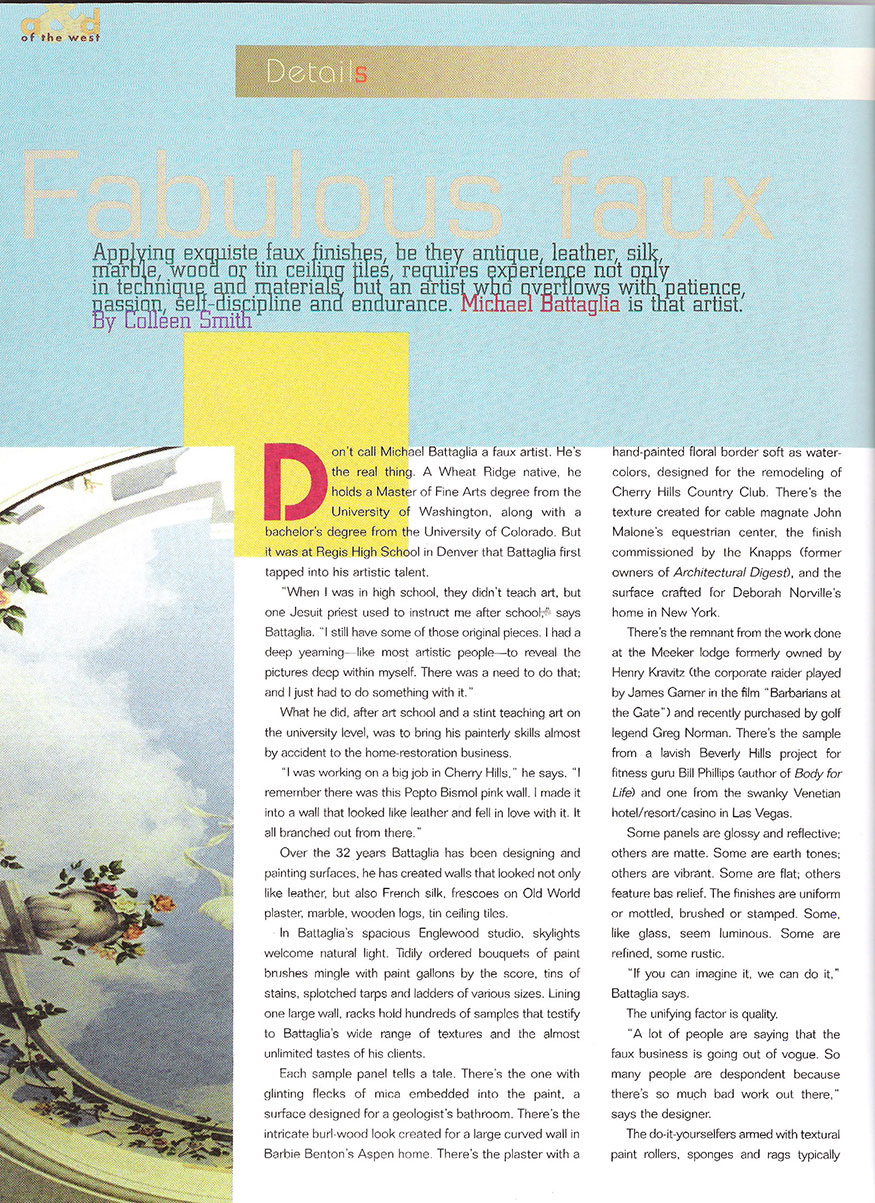
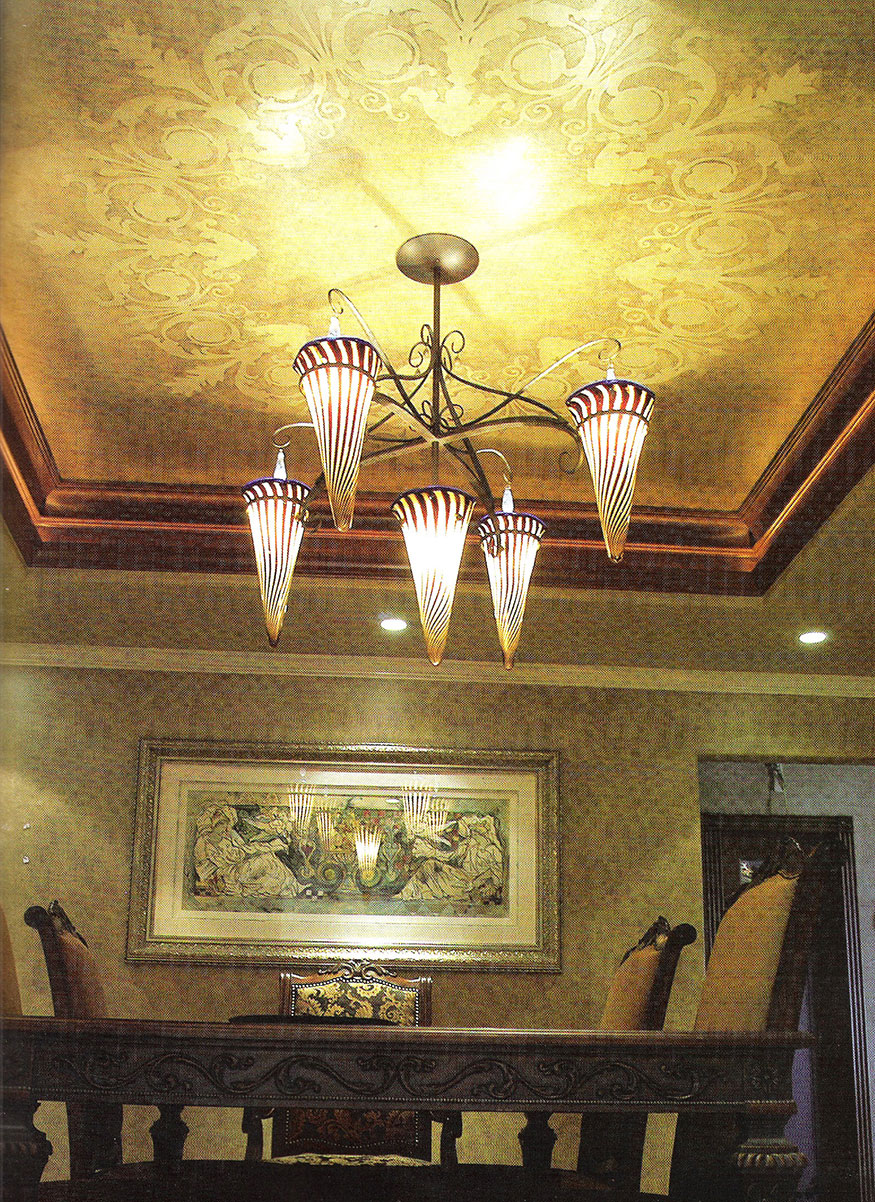
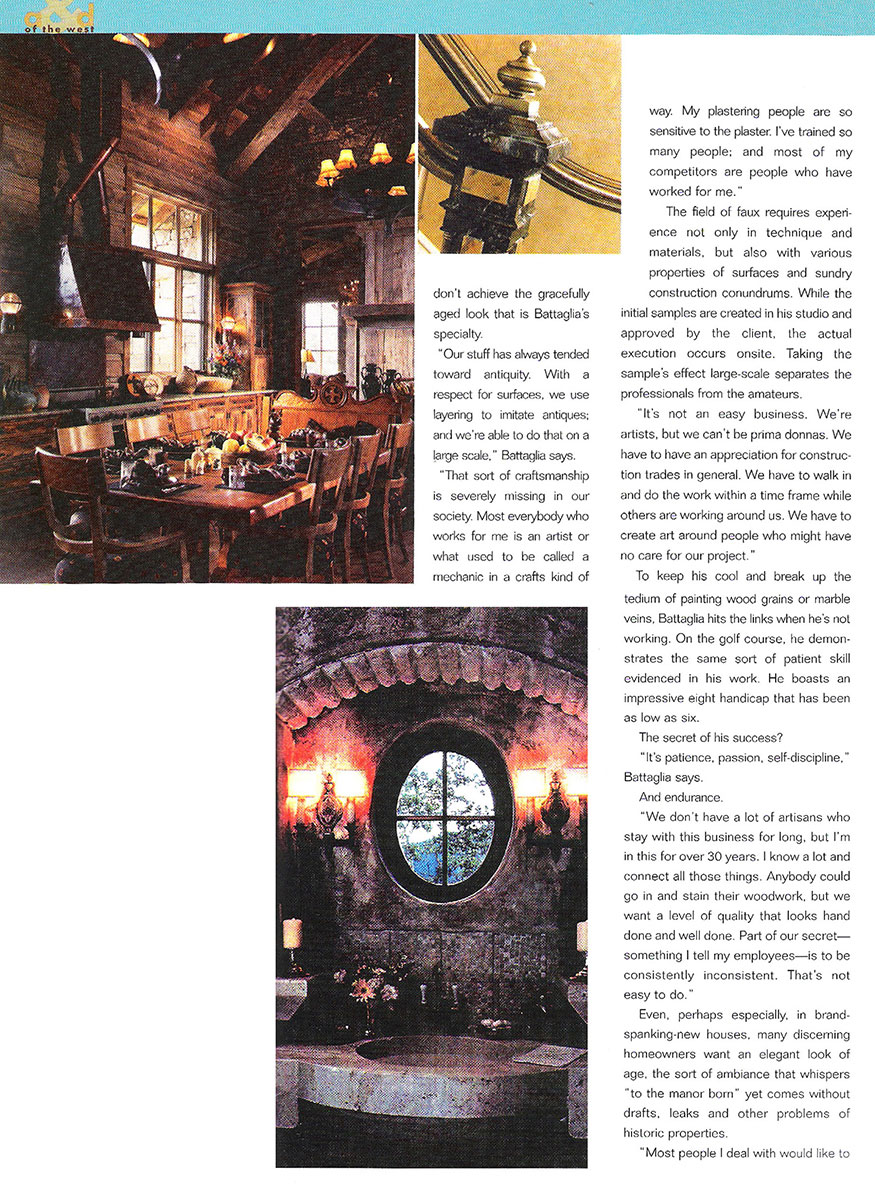
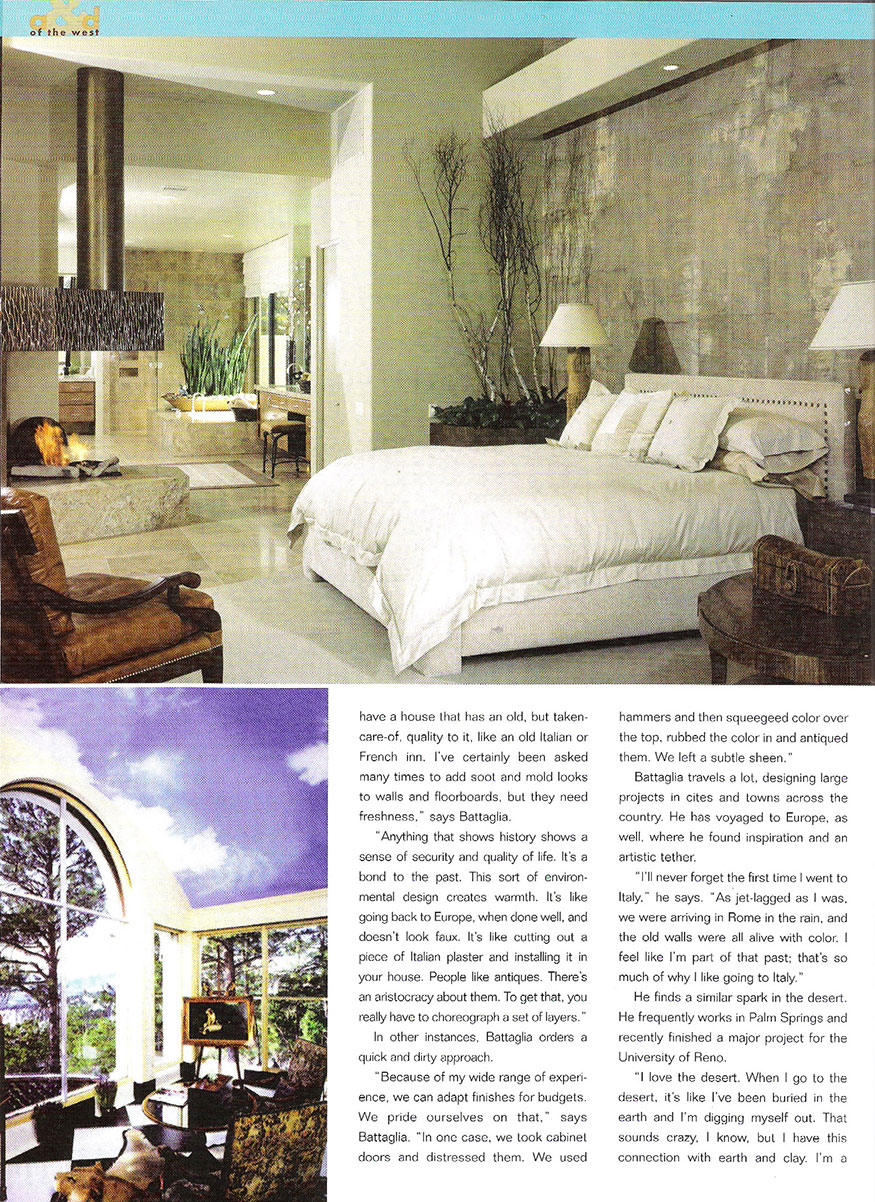
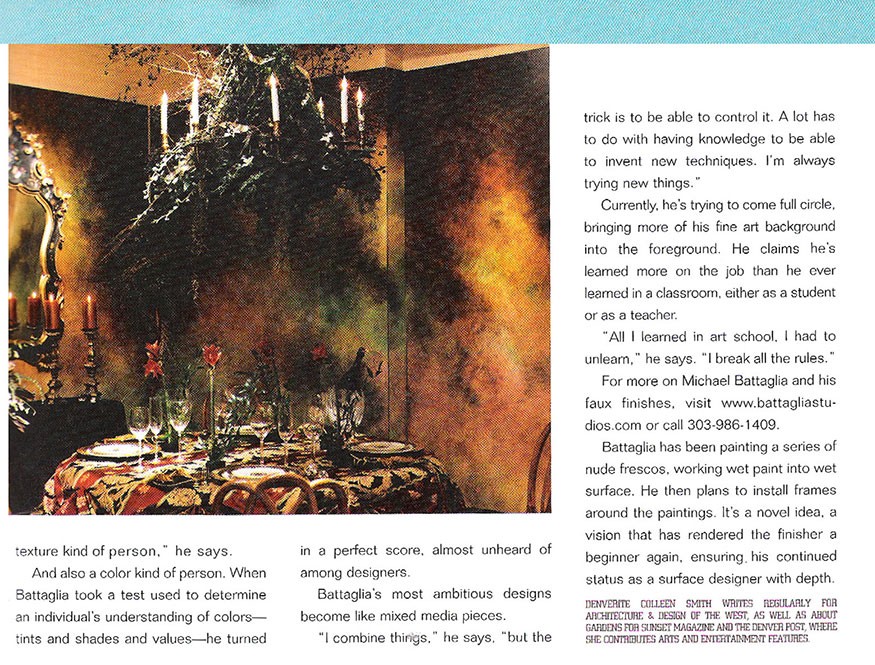
Palm Springs Art + Culture
